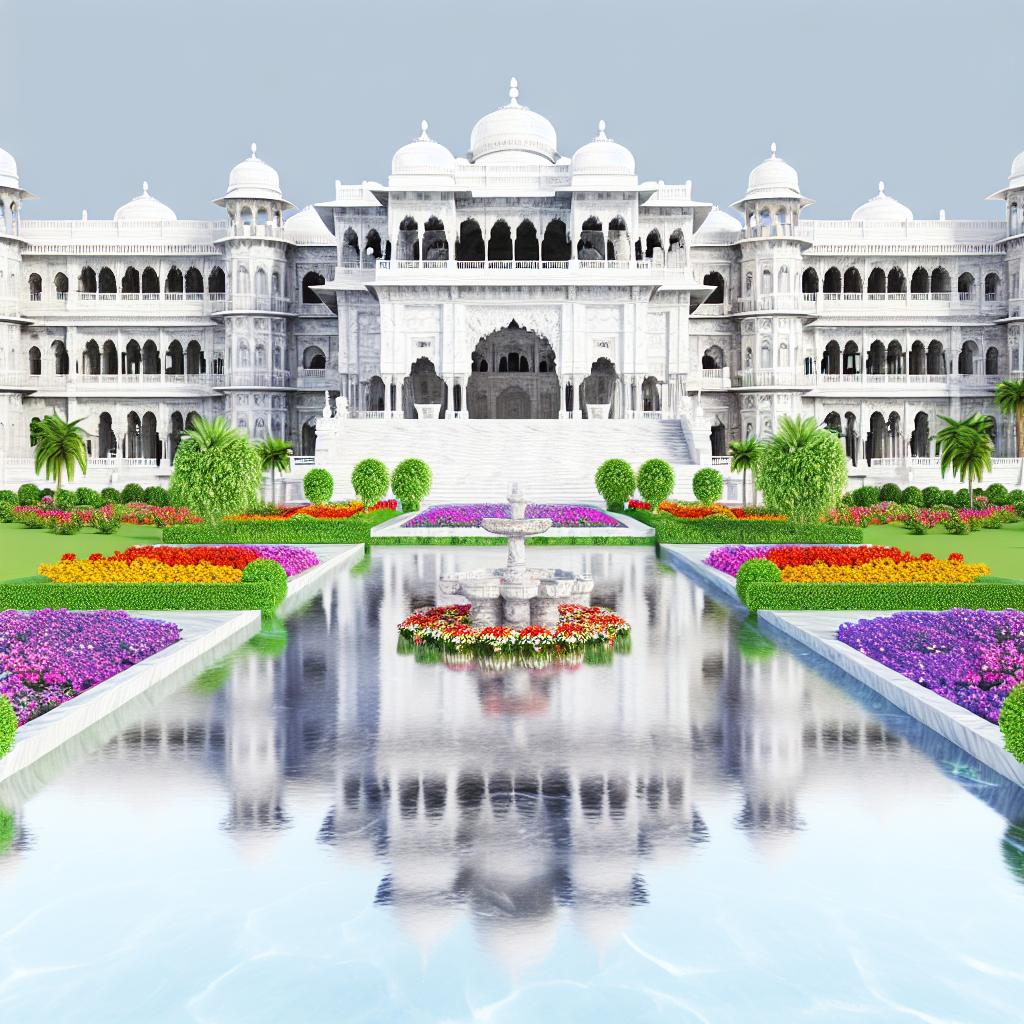The Marble Palace: A Historical Overview
The Marble Palace is a magnificent private residence located in Kolkata, India, renowned for its architectural grandeur and extensive collections. Constructed in the 19th century, this exemplary edifice remains one of the best-preserved royal buildings from that era. Its rich history, unique architectural features, and importance in cultural heritage make it a notable landmark deserving of exploration and appreciation.
History and Construction
The origins of the Marble Palace date back to the year 1835, when it was envisioned and constructed by Raja Rajendra Mullick. Raja Rajendra, a prosperous merchant with a robust fervor for art and architecture, sought to build a structure that would be a standing testament to his interests and wealth. The design of the palace is a harmonious blend of traditional Bengali and European architectural elements, which results in a style that is both unique and enchanting. The extensive use of Italian marble throughout the palace facilitated the christening of the building, giving it a name that reflects its visual identity and the opulence of its material composition.
The construction process of the palace involved skilled artisans and laborers who meticulously incorporated diverse design elements. European influences in the design are evident not only in the architectural structure but also in the varied collections housed within its walls. By integrating various cultural elements, the Marble Palace stands as a representation of the diverse artistic and architectural inspirations that influenced its creation.
Architectural Features
The architecture of the Marble Palace is marked by several striking features that contribute to its grandeur and historical significance.
Interior Layout: The palace’s interior is defined by spacious and symmetrical rooms, each meticulously designed with high ceilings that contribute to an airy and expansive feel. Large verandas complement the rooms, allowing for ample light and ventilation. The interiors are adorned with lavish chandeliers that sparkle brilliantly against the intricate designs. Moreover, the neo-classical sculptures positioned strategically within the space add an element of artistic elegance, amplifying the overall opulence of the palace.
Art and Artifacts: Raja Rajendra Mullick’s profound passion for art is evidently manifested through his extensive collection of paintings and art pieces. These collections include works by renowned artists such as Rubens and Sir Joshua Reynolds, providing an artistic lens into Europe’s art history. Alongside these paintings, the palace houses a range of sculptures, antiques, and elaborate furniture that hail from various parts of the European continent. These artifacts enrich the cultural tapestry of the palace, reflecting both personal tastes and the influence of western art movements of the time.
Gardens and Grounds
In addition to its architectural wonders, the Marble Palace is surrounded by lush, well-maintained gardens which offer a tranquil setting that further enhances the palace’s grandeur. These impeccably designed gardens are dotted with statues that evoke an aesthetic charm, while their greenery provides a contrasting natural beauty against the backdrop of the marble edifice.
An intriguing feature of the garden is its aviary, which houses a collection of exotic birds. This element adds an auditory and visual appeal to the surroundings, creating a serene environment that visitors find both captivating and soothing. The gardens and aviary align with Raja Rajendra’s vision of combining art, nature, and architecture, offering insights into his broader vision of beauty.
Open to the Public
Although the Marble Palace continues to serve as a private residence for the descendants of Raja Rajendra Mullick, parts of this grand structure are open for public viewing. Visitors have the opportunity to explore selected rooms, experiencing firsthand the opulence and artistry of the palace. The expansive gardens are also accessible for leisure strolls, making the palace a popular tourist attraction within Kolkata.
Visitors seeking more information on visiting hours or guidance on arranging private tours can refer to local tourist guides or respective travel services, which offer detailed advice on accessing this historical gem.
Notable Aspects and Preservation
The architectural brilliance and art collections housed within the Marble Palace hold immense historical value, meriting continual preservation efforts. Recognizing its significance as a cultural landmark, concerted measures have been undertaken to safeguard its structure and collections, ensuring it remains an enduring fixture in Kolkata’s rich historical landscape.
Despite its antiquity, the Marble Palace captivates architects, historians, and art enthusiasts who hold a deep appreciation for its historical architecture and artistic collections. Those interested in delving deeper into its rich history and aesthetics can find additional insights and interpretations through local cultural heritage tours or historical society publications.
In conclusion, the Marble Palace stands as a pinnacle of 19th-century architecture, embodying an elegant fusion of Bengali and European styles. Coupled with the rich art collections spanning across various cultures and eras, the palace offers a glimpse into the life of affluence and artistic pursuit that characterized its era. Visitors and scholars alike continue to be drawn to its beauty and historical narrative, ensuring that the Marble Palace remains a treasured site of cultural heritage in India.

